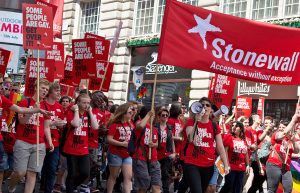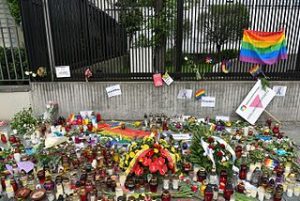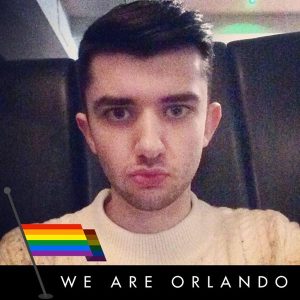In my last post, I explained how the Internet and social media may be having a negative influence on the social injustice of minority groups. Contrary to that belief, social media can also be used as a platform that conversely supports vulnerable people. Social movements are projected through social media due to the substantial number of people who use websites such as Facebook, Twitter, Tumblr, etc. (The list is endless).
As much as someone may voice their opinion in a negative regard, positivity can be found online in abundance. The ‘millennial’ generation have grown up in a society that is far more tolerant of LGBTQ+ individuals, as oppose to a pre-Internet era in which LGBTQ+ people were disparaged through media outlets and were not provided with the same rights as heterosexuals – though in some cases, this is still not the case.
Social media utilised as support
Many well-known LGBTQ+ charities have social media accounts that raise awareness in terms of the issue they seek to disseminate and campaign for. Examples of such charities include: Stonewall, GLAAD and the Human Rights Campaign Foundation. These organisations attract more than 100,000 likes on Facebook and Twitter, enlightening their followers on events and information in a straightforward and easily-accessible form. This ultimately prevents a ‘fear of missing out’, which sees people connecting to social made pages albeit partaking in the rewarding experiences (for example, pride parades or campaign marches) as well.

The Internet has also revolutionised itself as a safe-space for LGBTQ+ individuals who are in need of support and guidance whenever necessary. Online counselling and ‘chat therapy’ sessions are accessible through the internet, and are constructed through ‘listeners’ and ‘venters’. Anyone can take on the role of listener or venter, which may pose as a risk because of people who choose not to utilise their position appropriately. However, the format is a simplistic method for vulnerable individuals to express themselves and seek help within minutes – much more different to a pre-Internet era where LGBTQ+ people were shamed for their problems, and the idea of ‘counselling’ or ‘therapy’ was met with fear and further induced their anxieties.
A nation that mourns but aids together
Social media acts a ‘global unifier’, especially in regard to global news. We use Facebook and Twitter (and many other media outlets) to keep ourselves up to date with information across the globe. It also unifies us in a sense that we come together in a time of need or mourning. A relevant example of this is the 2016 Orlando Shooting, in which a terrorist attack took place on the 12th of June. 49 people were murdered and 53 others were wounded, with the specific attention of causing harm to those in Pulse, a gay nightclub. The news of this mass shooting was immediately publicised online, with the club posting on its social media page on Facebook: “Everyone get out of pulse and keep running.”, only a matter of minutes after Omar Mateen (attacker) started gunfire.

The attack was announced as the deadliest mass shooting by a single shooter and the deadliest incident in US history against LGBTQ+ people. The reaction saw ‘#PrayForOrlando’ become the top trend worldwide, though the outcry lasted much longer. Many people took to social media to raise awareness towards the fact that those who were injured were in need of blood donations. Americans travelled the country with the information that many LGBTQ+ people and supporters required blood to survive. This also made reference to another issue where gay men who have been sexually intimate in the past year are forbidden from donating blood.
Propaganda on social media
Facebook created a feature that allowed users to change their display pictures to a new one that incorporated the statement: ‘WE ARE ORLANDO’, with a pride flag next to the text. The globalisation of Facebook and Twitter demonstrates the support and advocacy of LGBTQ+ rights, despite the fact that many countries view the LGBTQ+ culture as taboo. Facebook has also previously provided a similar function that let their users apply the pride flag as a filter over their profile picture during pride season.

To conclude,
The use of social media in regard to social issues is an intricate and complicated subject. Though many people utilise to express hatred, the organisations themselves are not tolerant to ignorance and bigotry. However, there is uncertainty towards what can be considered homophobic, racist or sexist, but we do not need to worry. LGBTQ+ rights are increasing, especially in western countries – a part of the world where social media is prevalent and important. The fantastic thing about social media is that you’re made aware of how many people support the cause – no matter what age. The Internet is a place where anyone can express themselves in a comfortable way, and a great platform for LGBTQ+ people and supporters to help others gain understanding and persuade them to become part of the cause.